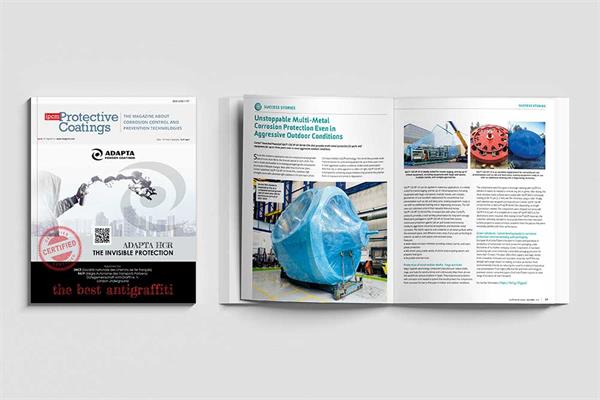
Read the latest edition of the magazine dedicated to corrosion protection and control technologies in the heavy industry.
As the war in Ukraine escalates and energy costs skyrocket, it is imperative to diversify energy sources with the aim of increasing the share of energy produced from renewable sources.
The International Energy Agency has drawn up a ten-point plan to reduce the EU’s dependence on Russia within a year. This identifies three options for energy production, not all of which are equally environmentally sustainable: speeding up solar and wind power production, returning to coal and oil production, and boosting (or going back to, as is the case of Italy and twelve other EU countries that had given it up) nuclear power.
Certainly, energy transition to renewable sources is the most far-sighted and environmentally conscientious choice. The Mediterranean’s first offshore wind farm will be inaugurated in Taranto (Italy) on Thursday, 21 April. However, it is a long road, which is not going to produce effects in the short to medium term.
In the immediate future, the most feasible measure to cope with the emergency is negotiating an increase in gas supplies from African countries such as Algeria, Mozambique, Congo, and Angola. However, these countries’ political instability as well as growing domestic demand for energy (they are all developing economies) could lead to supply paralysis. Not to mention a third critical factor: the infrastructure deficit in these areas.
The construction of transport and refining infrastructure for energy resources is of strategic importance for states with resource-intensive economies that, at the same time, propose themselves as new European energy partners. A recent and particularly significant example is exactly Mozambique, where the discovery of offshore oil and gas fields is accompanied by major public and private infrastructure investment[1].
Both routes to diversification of energy sources and energy supply partners, therefore, require investment in new infrastructure, as well as maintenance and upgrading of existing infrastructure, namely not only gas and oil pipelines, but also regasifiers, floating storage and regasification units, wind farms, and photovoltaic plants.
Endless opportunities for development and growth open up for the corrosion protection sector. Protecting such infrastructure against weather conditions will be the task of our industry in the years to come and coating manufacturers will also be able to champion these investments, as is already the case in other fields (PPG, which provides thermal, fire, and corrosion protection systems for electric vehicle batteries, is helping accelerate the shift to electric vehicles[2]).
In order to keep up to date with all the latest technologies and innovations in corrosion protection, prevention, and mitigation, the coming months will offer a high number of international trade fairs. It starts at the end of April with PaintExpo 2022, where you will also find this magazine issue, and it continues in May with OTC in Houston (USA), Pipeline Coating in Vienna (Austria), StocExpo in Rotterdam (The Netherlands), IVS in Bergamo (Italy), and Pipeline & gas Expo in Piacenza (Italy). The topics of energy transport and refining will be central for all these events, with a special focus on the coatings available for their corrosion protection.
ipcm®_Protective Coatings will be your guide and travelling companion at all these trade fairs!
READ THE MAGAZINE